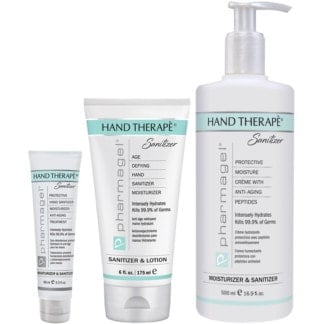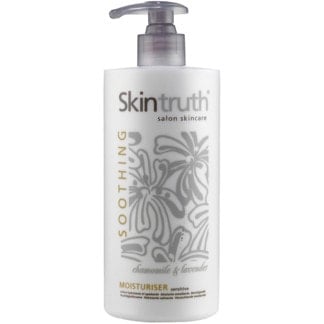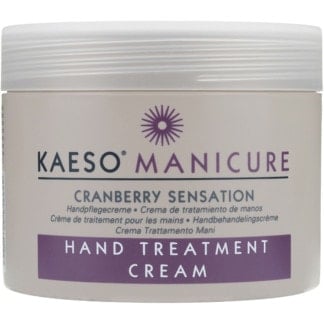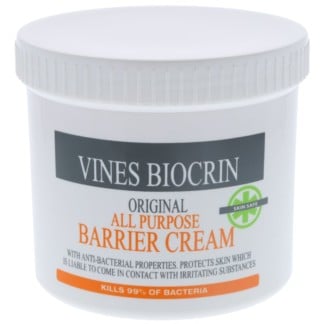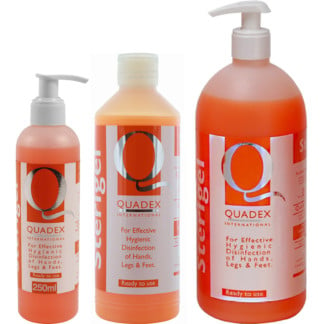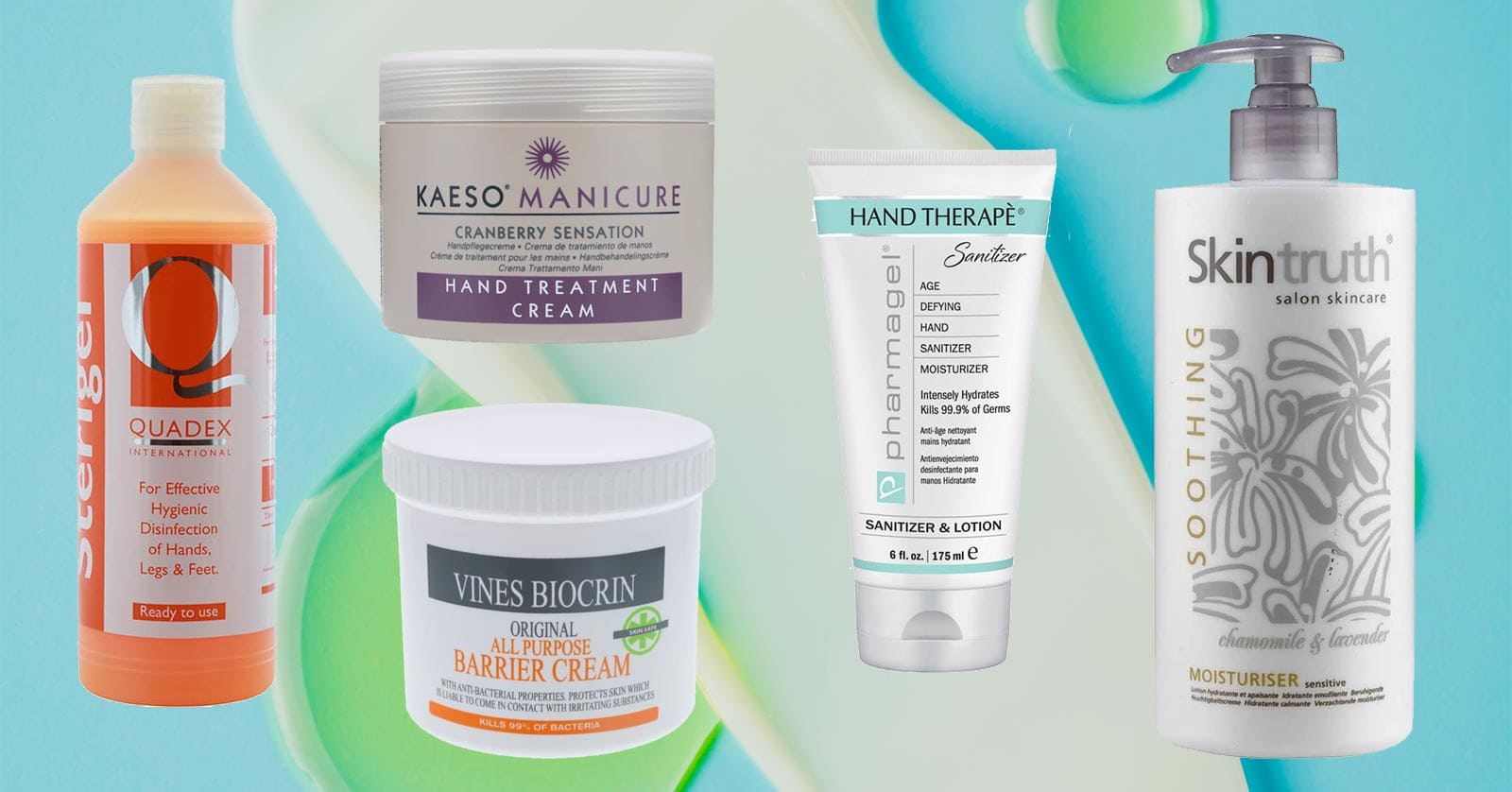
Hairdressers’ hands are constantly exposed to water and harsh chemicals. At Hair Health & Beauty, we help hair professionals protect and heal their working hands by stocking a range of the best hand creams for hairdressers in South Africa.
Below we showcase top-rated hand creams for stylists. We also offer answers to hand health questions in our Q&A.
Please note that Hair Health & Beauty is a trade-only supplier for South Africa’s hair, health and beauty industry. To access prices, kindly register for a trade account.
Pharmagel Hand Therapè Sanitizer Hand Cream
This intense but light cream does double duty as a hand sanitiser and moisturiser. Just one application kills 99.9% of germs and provides four hours of intense hydration.
Shea butter drenches dry skin in rich, comforting moisture, while retinol A (vitamin A), a clinically proven anti-ageing peptide, stimulates collagen to soften and smooth lines and crepey skin.
Skintruth Soothing Moisturiser
Sensitive, allergic skin that’s prone to irritation and inflammation will drink up this silky moisturiser.
The light, gentle cream is specially formulated with chamomile and lavender extracts to calm and soothe the red, chapped skin so many hairdressers experience.
It’s also alcohol free and contains no known allergens, such as parabens, sulphates and mineral oils.
Kaeso Manicure Cranberry Sensation Hand Treatment Cream
For hairdressers who prefer a thicker hand cream, this rich, buttery treatment is a fusion of natural ingredients and botanical extracts.
Coconut, jojoba, sweet almond and grape seed oils add intense, nourishing hydration, while cranberry fruit extract locks in moisture and leaves a light, fruity scent.
The formula restores softness and suppleness to dry, damaged skin, leaving hands feeling velvety and smooth. It’s vegan and free from parabens, sulphates, propylene glycol, mineral oil and harsh chemicals.
Vines All Purpose Barrier Cream
This barrier cream actively works to repair the skin from damage and to prevent skin cells from losing moisture and becoming dry, irritated or itchy.
Apply before using harmful chemicals during tinting and colouring to protect skin against redness and harmful reactions.
Its anti-bacterial properties kill 99% of bacteria to effectively sterilise the skin surface too.
Quadex Sterigel Skin Sanitizer
Hand health in salons and spas must include sanitising hands after each client, but repeated hand washing with soap and water can aggravate skin, leaving it cracked and sore.
This waterless handwash also contains a hand softener. It’s a non-greasy, non-sticky, non-irritating formula that forms a silicone barrier on the skin’s surface to protect hands from 99.99% of disease-causing microbes.
It instantly kills germs and bacteria as soon as it’s applied. While it does contain alcohol, the advanced formulation won’t cause irritation.
Q&A
Q. What are the main skin issues that affect hairdressers’ hands?
A. Hairdressers are three times more likely than other professionals to suffer from occupational skin issues, including dermatitis and viral, fungal and bacterial infections.
Repeated exposure to harsh chemicals, soaps, irritants and allergens, frequently wet hands and wearing latex gloves for long periods can alter the skin’s pH and moisture content, damaging its protective barrier.
When the skin’s barrier is damaged, the protection it offers is lost and hands become vulnerable to these issues.
Q. What is contact dermatitis?
A. Contact dermatitis is the most common condition suffered by hairdressers. It’s characterised by red, itchy, dry, cracked and flaky skin. In some cases, blisters, lesions and fissures occur.
Dermatitis can be so severe that in the UK an estimated 14 to 20% of hairdressing students are forced to drop out of training in the first two years. Contact dermatitis is either caused by an irritant or allergen.
Q. What are the main hairdressing chemicals that cause skin irritation?
A. A number of chemicals commonly found in shampoos, conditioners, bleaches and hair colours can cause skin irritation, including:
- ammonia
- ammonium persulphate
- artificial colours
- glyceryl monothioglycolate
- hydrogen peroxide
- perfumes and fragrances
- preservatives
- paraphenylenediamine (PPD).
Unfortunately, sensitivity to these chemicals doesn’t typically just go away over time.
Q. What are common skin infections?
A. Hairdressers commonly pick up fungal, bacterial and viral skin infections from tools (scissors, brushes, combs), and clients’ hair and skin.
Athlete’s foot, yeast, staphylococcus, streptococcus and pseudomonas are some of the most common infections that can be transmitted. Even viral infections like herpes, hepatitis C (even HIV) can find their way into broken skin.
To avoid contamination, it’s important to take extra precautions, especially if you have cracked, broken skin on your hands.
Q. What skin allergies are common among hairdressers?
A. As well as chemicals, there are a number of items in salons that contain allergenic ingredients that can cause skin conditions. Two of the most common are gloves and scissors.
Allergies to natural latex sap and rubber accelerators found in gloves are common. Nickel found in scissors is also a common cause of allergic dermatitis. Choose scissors that are coated in a non-hypoallergenic material.
Q. How should hairdressers protect the skin on their hands?
A. The best way to protect hairdressers’ skin is prevention.
1. Regularly clean and sterilise tools.
2. Avoid products that contain harsh chemicals and known irritants and allergens.
3. Regularly sterilise and nourish hands by applying protective creams.
Q. What should hairdressers look for in hand creams?
A. It’s personal taste whether you prefer a thick cream or thinner lotion. Either way, ensure your hand cream is free of known allergens, such as parabens, sulphates and mineral oils.
Opt for a cream that contains ingredients that strengthen the skin’s lipid barrier function and restores moisture levels, such as shea butter, vitamins A and E, and natural oils.

